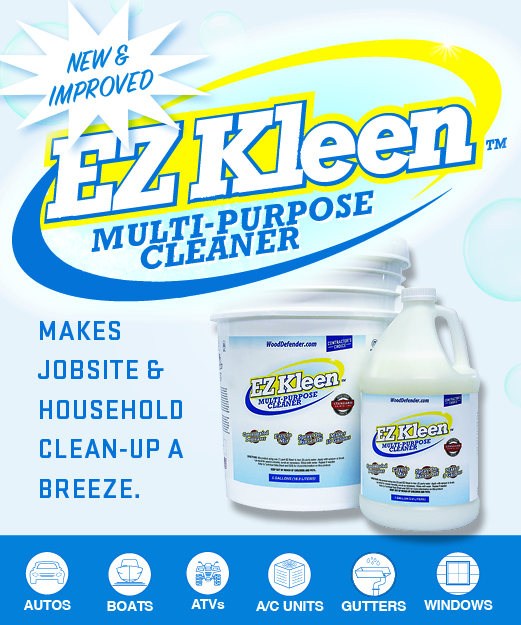
Financial Best Practices
by Diane Calabrese | Published August 2025

It’s not easy. In fact, it gets more difficult each day to implement and maintain strong financial practices.
Yet there’s not a business activity that does not tie in some way to a financial transaction. On a list of the activities a business owner should consider part of financial practices, the U.S. Small Business Administration (SBA) now includes both cybersecurity and AI.
Theft in the real world can set a business back financially, and so too can nefarious actors in the digital sphere. A digitally spawned loss could easily be greater than a physical one.
AI might ease composition of marketing material and website content, but using AI tools opens a business to new kinds of vulnerabilities stemming from copyright issues. Who owns text that shows up nicely outlined thanks to an AI tool? Must someone be paid?
Of course, all the traditional parts of finances (cash flow, reserves, accounts payable, accounts receivable, payroll, taxes, licenses, etc.) require attention too. Thes parts were already demanding before we all trekked to the digital sphere.
In 2025 no business is small enough to shun a commitment to the best in financial management and reporting. Recall the 1099-K reporting requirement, which was delayed, but is not gone. The requirement kicks in at a $2500 threshold in 2025 and drops to the long-promised $600 threshold in 2026, as scrutiny continues to increase on even the smallest gig and part-time and trial enterprises.
Two of our industry members who have met the many demands (and keep meeting them) share some suggestions about the the how (and why) of financial best practices. A strong bit of advice begins as much advice does: Avoid mistakes.
“One of the worst mistakes we made was confusing profit with cash,” says R. Calvin Rasmussen, president, Royce Industries, L.C., headquartered in West Jordan, UT. “On paper, we were profitable, but that didn’t translate to available funds in the bank.”
The lack of clarity between profit and cash led to a problem, but it also taught a valuable lesson. The sequence of events began with viewing the paper profits as bankable funds, a perspective that led to what Rasmussen says was a “false sense of security” and tapping a line of credit to cover operational expenses.
Such a sequence could work out as it often does, if external forces don’t derail it. But during the financial crisis of 2009, Rasmussen’s bank called the credit line due. “That moment forced us to earn what I jokingly refer to as a PhD in budgeting, cash flow management and financial discipline,” he says. “It was painful but completely changed the way we manage money.”
Today, if someone asks Rasmussen about one thing he wishes he had learned earlier, he is ready to respond. “My answer: don’t overextend yourself and don’t rely too heavily on credit,” he says. “We’ve adopted a few practices that now keep us on course, chief among them are our three-tiered budget system and a daily gross profit report that keeps everyone focused on performance in real time.”
Focus and clarity are flip sides of the same coin, so it seems that best financial practices can only be realized if there is clarity. What does Rasmussen think about the assertion? “Absolutely,” he says.
“Clarity is foundational, if you don’t understand why records are kept, your financial decisions are likely to be flawed,” explains Rasmussen. “That said, clarity alone isn’t enough. Discipline, accountability, and adaptability must also be in the DNA of your company.
“One tool that’s helped us maintain clarity is our budgeting process,” continues Rasmussen. “Each year, we prepare three versions of our budget: best case, worst case and likely. This approach forces us to think critically and prepare for multiple outcomes, rather than operating on hope or habit.”
Many vendors supply digital integration tools for businesses. And despite the ever-greater number of cyberthreat warnings, they market their products on the utility of having integrated records – so integrated that everything from inventory to customer data to accounts receivable and more are linked.
The value of full integration of records? For one, a company might be able to peg its inventory to the buying habits of its customers with great accuracy. The downside is that more links to crucial data create more entryways for cybercriminals.
What does Rasmussen think about integration in general? “Integration is hard, especially when the software options available don’t align perfectly with your business model,” he says. “We found success with a less-conventional accounting software called Denali by Cougar Mountain.”
The Denali basics? “It wasn’t plug-and-play but combined with a crash course in accounting 101 on my part, and my brother Chad’s [Chad Rasmussen] MBA in finance, we were able to align our operations and reporting in a way that gave us real-time insight. This helped us pay off our credit line and build a cash position we’re proud of today.”
Metrics
Measure it. That’s the sure way to be objective, especially about something as close to one’s heart as a business.
“Not knowing your numbers” is a financial practice to which an owner must not succumb, says Greg Sprunk, president of Superior Cleaning Equipment, Inc. in Phoenix, AZ. “It’s so important to have metrics in place.”
Normally the metrics are considered the purview of the owner. But Sprunk explains that metrics provide context for employees as well. “The ability to measure performance, set goals and have budget numbers, as well as clear objectives, is very important.”
Best financial practices hinge on having a budget in place, says Sprunk. The budget should be shared with the owner’s team members as necessary.
With information about what makes an income-producing employee in hand, each employee can set a goal, explains Sprunk. Goals set and met or exceeded can be compensated appropriately.
“And [have] a well detailed income statement and balance sheet,” says Sprunk. It allows easy tracking of progress and can be shared with others as needed.
“One of the best tools for best financial practices would be to participate in the CETA benchmarking program,” says Sprunk. Participation in the program is optional, but for members of the Cleaning Equipment Trade Association there is no fee required to take part.
“[The benchmarking program] offers incredible detail and visibility on your business, as well as comparing with others,” says Sprunk. He recommends both benchmarking and CETA membership with great enthusiasm.
Sprunk strongly advocates for integration of financial records. “If a company of any size in 2025 is not using a digital or computerized accounting program, they are at a severe disadvantage [in] productivity, customer service and financial reporting,” he says.
“It is important to have good, clean records, backed up to the cloud, shared with your accountant either throughout the year or at the end of the year,” says Sprunk. As a corollary he adds that prudent and safe use of the records is a must.
“Have controls in place [with financial software],” says Sprunk. The controls should restrict access to data to authorized individuals.
“There is no real excuse to not have integrated financial records at this time,” says Sprunk. “Many software programs exist to help the small business owner be efficient and professional. The days of manual ledgers and piecemealing accounting systems are going. Many different versions of QuickBooks, for example, from the single user all the way up to 50 employees, are available and very economical.”
The plan
There’s a universal refrain among business consultants, successful business owners, and entities such as the SBA: A business owner must have a business plan.
It doesn’t matter where a business is in its life cycle: launching, growing, planning for transition (e.g., to new owner). There’s flexibility in a plan. It can be amended and changed as needed. (Recall Rasmussen’s approach of making three plans.)
Still, the business plan keeps the business owner on track. The information it contains allows for a self-check on exuberance and a reality-check on pessimism.
One month of brisk sales that exceed expectations by a wide margin is too limited a metric (data point) to start adding employees or inventory. It’s the trajectory of a business – month over month trends in sales, profits and losses, which reveal where changes (of any sort) should be made.
A business plan in conjunction with financial statements — monthly at least, weekly is better, daily excels, enables an owner to make decisions about changes. Adding another service truck might seem a good idea to a mobile contract cleaner.
But beyond the cost of the truck and the employee, the additional insurance and maintenance costs for the truck must be considered. The return on the investment [ROI] in the addition of truck and employee must look certain (as near-certain as possible).
Compliance and regulatory requirements grow along with a business. For instance, once a company has 50 or more employees, it must provide health insurance.
Best financial practices – a place for everything and everything in its place, encompass and simplify all requirements for business ownership. But they don’t make it easy.





